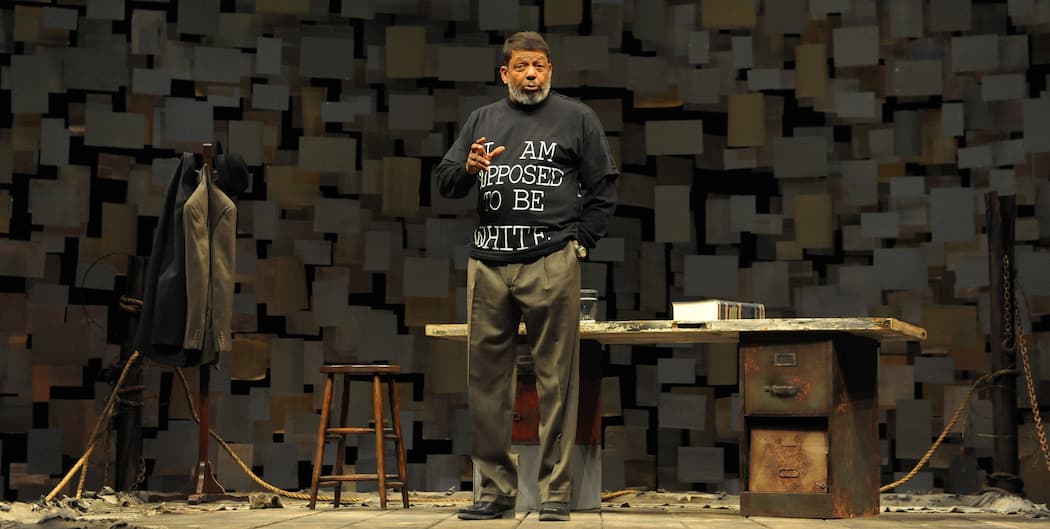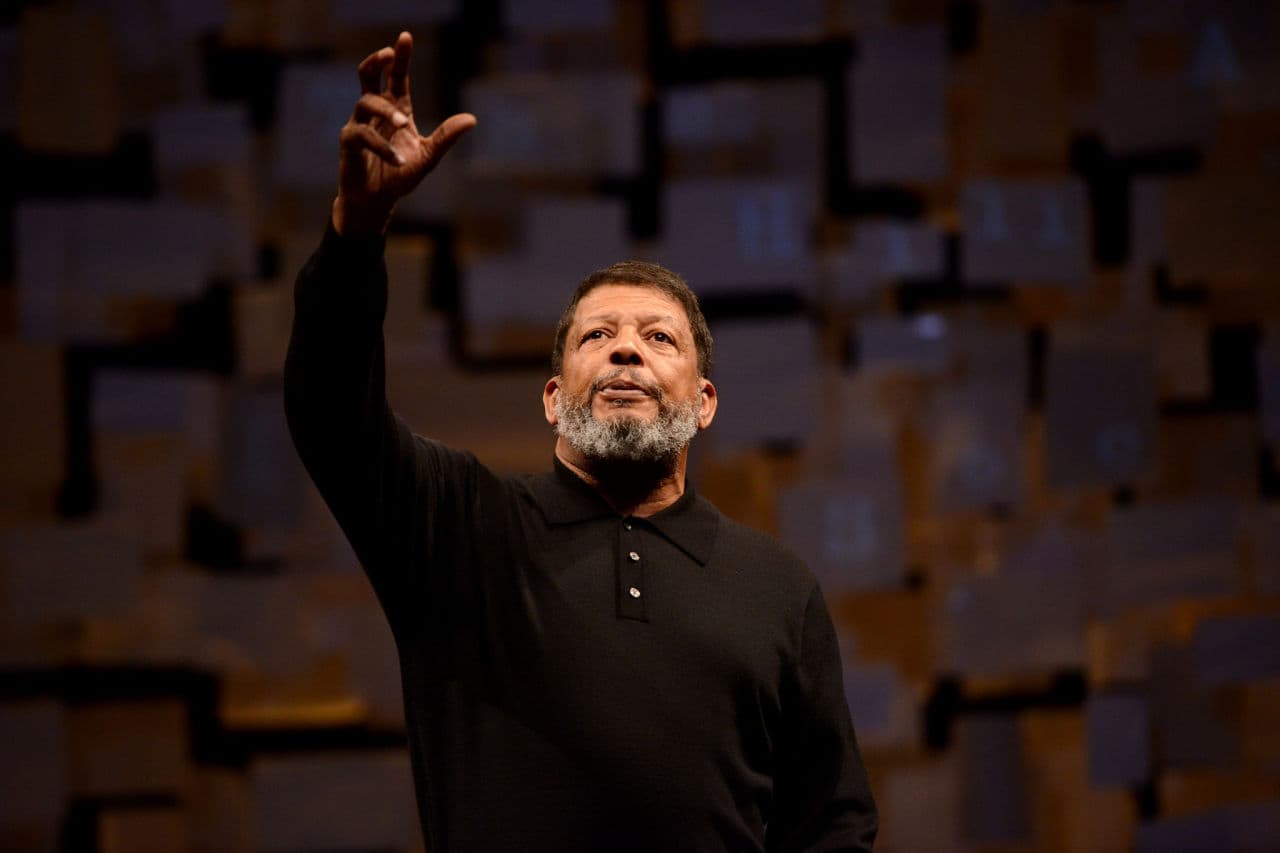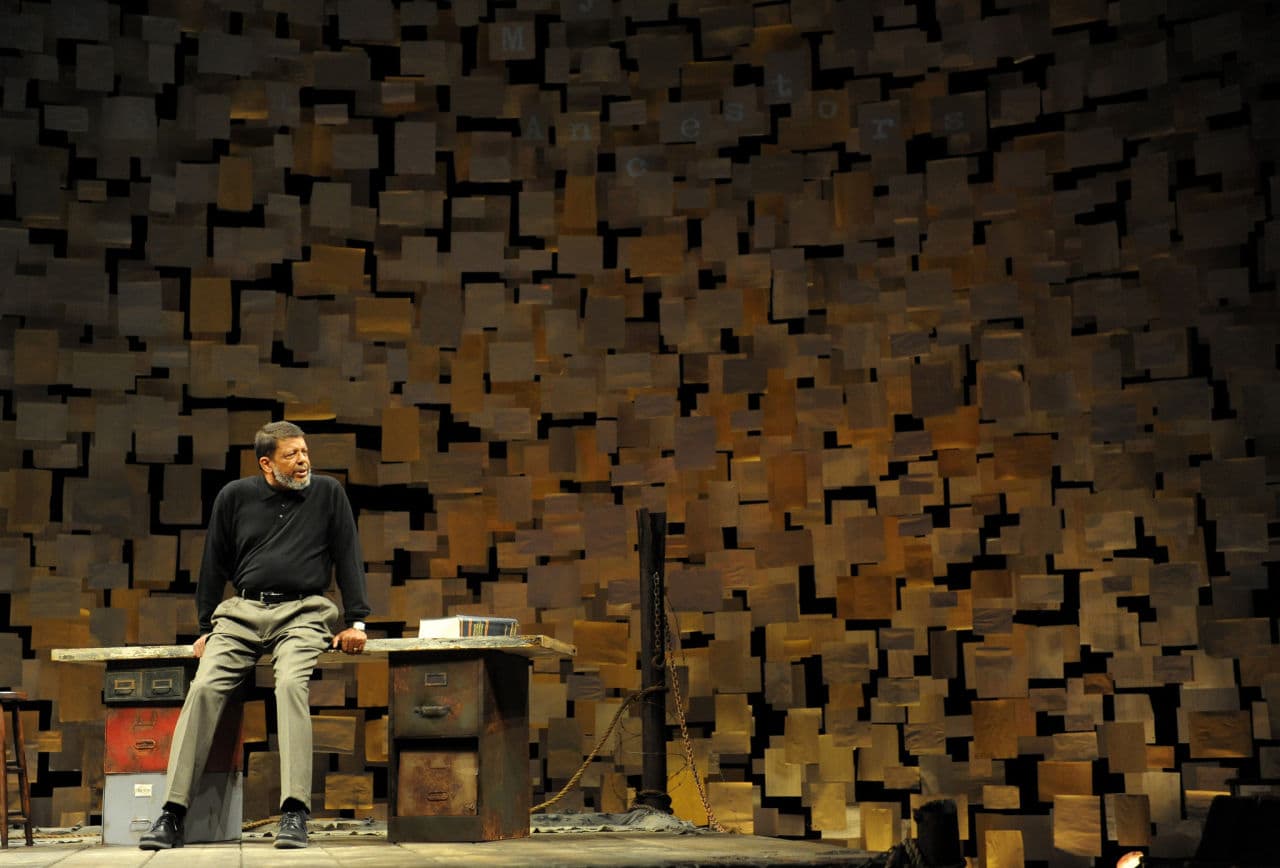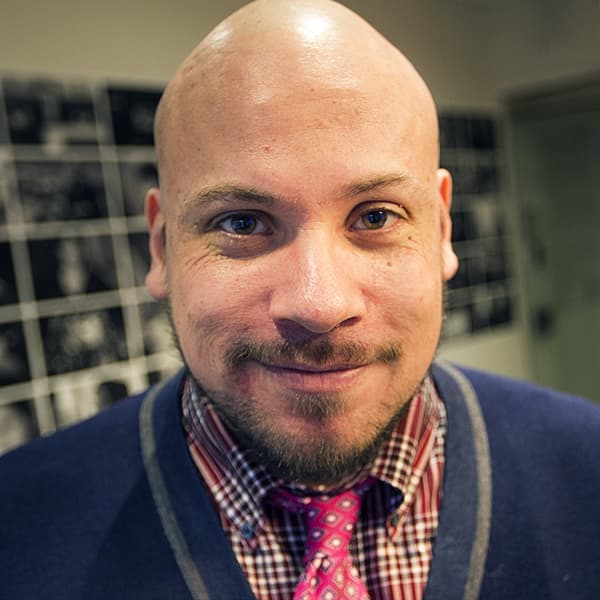Advertisement
August Wilson Speaks Through A Pointed 'How I Learned' At The Huntington

“How I Learned What I Learned” provokes, accuses, explains and sometimes just sings. What it doesn’t do is let anybody off the hook — least of all the audience.
August Wilson’s autobiographical one-act monologue, which he himself performed Off Broadway two years before his 2005 death, utilizes direct address to tell the sorts of stories he’d spent a career translating into stage dramas. The setting is Pittsburgh’s Hill District, and the theme is forthright: Wilson’s insistence on claiming his own dignity and his own blackness, in an America that would demean him or, even in its well-intentioned moments, promise to ignore — and thereby erase — his culture and race.
Huntington Theatre Company’s production, now onstage at the BU Theatre through April 3, is propelled by the virtuoso performance of Eugene Lee and sweetened by the excellent work of the full design team. Director Todd Kreidler was Wilson’s dramaturg in the playwright’s final years, and is credited as “co-conceiver” of this piece. He and Lee together navigate ably its many shifts in tone, though they do keep things at a generally even keel, perhaps pulling back from moments that could land with more force.
As Wilson, Lee commands both the sizable stage of the BU Theatre and, on press night, a house packed with theatergoers who seemed to hang on every word. Lee has been on that stage in three other Wilson plays, and the Huntington can boast of having produced the full Century Cycle, with seven of those 10 plays bowing here before their first Broadway runs.
Wilson, Kreidler and Lee were all here on the Avenue of the Arts for “Gem of the Ocean” in 2004, the last play for which Wilson actively participated in the rehearsal process. (“Radio Golf” became the last of his plays to take the stage, in 2005.) The present production retains the design team of the show’s much-noticed Off Broadway production by Signature Theatre in 2013.
So yeah, these folks know from August Wilson.

Scenic designer David Gallo fills the upstage space with a hanging cloud of sheets of white paper which, in concert with Thom Weaver’s painterly lighting design, crafts a series of gorgeous stage pictures. (The script is ambiguous but evocative in setting the piece in “the crucible in which many a work of art has been fired.”) Impressively, the design makes the playing space more manageable for a sole performer but doesn’t give the sense of crowding the actor out.
Lee displays great comic timing — and there’s a surprising number of laughs here — but turns on a dime when the mood must turn. In an early scene, he wears a t-shirt reading “I am supposed to be white,” and claims that he got it from “a man named Clarence Thomas.” He pointedly explains that he was at “a fundraising event at the Huntington Theatre” — the script places this story only “in Boston… at one of the theaters there” — and a man approached him to boast that he doesn’t “see color.”

The sentiment is seemingly well intentioned, but Wilson translates it as evidence that a black American can only be accepted by the majority culture by eschewing his blackness — by wearing, in effect, Clarence Thomas’s t-shirt. (Wilson’s critique is borne out more recently by the ascendance of the term “post-racial.”) The implication is that the melting pot of American assimilation is essentially a white-supremacist project. As voiced here, Wilson doesn’t want to blend in — he demands to exist as himself, in the full context of uncountable years of history and culture.
Wilson does well to mix colorfully evoked anecdotes — the details form a rich storehouse of Americana pertaining to Pittsburgh’s African-American community in, roughly, the post-war years — with bitter-pill lecturing. But some of the stories are less essential than others; the piece would benefit by more clearly framing its timeline. And the very fact that an audience composed largely (though certainly not entirely) of white people can chuckle amiably in response to the moments when Wilson most clearly shouts “J’accuse!” suggests to me either a notably tuned-in crowd or at least some degree of not quite being challenged, perhaps, as vigorously as the playwright may have intended. (And I’m by no means excused from the observation.)
Advertisement
It's likely a mixture of both. As seen in this well-sculpted and ultimately satisfying production, “How I Learned What I Learned” provokes while it pleases.
Jeremy D. Goodwin contributes regularly to The Boston Globe, The ARTery (where he is also an editor), American Theatre and many other publications. See more of his work here. Follow him on Twitter here.

